Buffalo Bill Center of the West
I’m sure many of you have been to this marvelous museum - or, should I say, this conglomeration of 5 museums: The Buffalo Bill Museum, The Plains Indian Museum, The Whitney Western Art Museum, The Cody Firearms Museum, and the Draper Natural History Museum. 5 marvelous museums in one. Luckily, you can take two days to visit since it is so big. We arrived right before noon since we had spent the morning at the Dam and breakfast. But, we knew we had tomorrow. Being the history student, we first wandered through the Buffalo Bill Museum, relating his history. I suppose I knew the outline of his life story but not in any depth. There was a lot here that surprised me:
He was the oldest male member of his household so, when his father died when he was 11, he went off to find some work and joined the freighting firm of Russell, Majors and Waddell as a cattle drover and teamster, crossing the Great Plains several times. At 11? A paying job, away from his family? I was still playing hopscotch and wearing braids. But then, maybe, at the age of 14 he went on to work for the Pony Express, and maybe not. I’ve read some places where he worked for the Pony Express and other places say this is an unproven part of the Buffalo Bill legend. He also got his nickname of ‘Buffalo Bill’ when he worked 18 months for the railroad killing buffalo to feed the workers. He says that he killed approximately 4280 buffalo (actually he was killing bison, not buffalo but ‘Bison Bill’ isn’t as colorful.) Here the legend began and soon it would grow.

Ned Buntline, a dime novelist, really began the legend, he saw a good story and ran with it. But, Buffalo Bill let him run. Over the 4 decades beginning in 1869 when the first Buffalo Bill story appeared, over 700 Buffalo Bill stories and novels appeared.
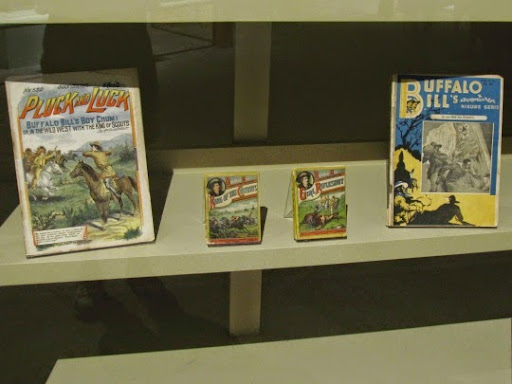
He was the hero of more fictional stories than any other American character. Then Buntline created a drama for Buffalo Bill to star in and, though the critics thoroughly panned his performance, ‘good looking fellow, tall and straight as an arrow, but ridiculous as an actor’ it didn’t matter, he was off and running. Soon he developed his own show which grew in to the ‘cast of thousands’ Wild West Show which played around the world and starred in the Golden Jubilee for Queen Victoria in 1887 in England.
‘I determined to give the people of the East some idea of the West and the doings here. I wanted them to see some real cowboys and buffaloes and horses. To see a lariat cast by one that knew how to do it. And so I got up the ‘Wild West’ combination.’
William F. Cody, The Denver Tribune, 11/15/1883
Most of that outline I knew but I found out some other facts that I did not know. He was the reason that many people regard the ‘cowboy’ as a real American icon. Prior to Buffalo Bill, he was regarded as a drunk, a gambler, a gunfighter and a womanizer especially after a cattle drive. But, after Buffalo Bill cleaned up this image, the cowboy became an American icon and paved the way for such well-known clean-cut cowboys as Roy Rogers, Gene Autry, the Cartwrights and all the western shows that we all watched as kids.
His reputation is as an Indian Fighter but that is not true. He regarded the American Indian as a true American and, in posters for his Wild West Show, called them the ‘Americans.’ He hired many, even Sitting Bull, to be in his shows and gave them a chance to represent their way of life for all his audience to see. Buffalo Bill stated in 1885 that
‘The defeat of Custer was not a massacre. The Indians were being pursued by skilled fighters with orders to kill. For centuries they had been hounded from the Atlantic to the Pacific and back again. They had their wives and little ones to protect and they were fighting for their existence.’
‘Every Indian outbreak that I have ever known has resulted from broken promises and broken treaties by the government.’
(The Indians) have been badly used. They have their side of the story. For honesty and virtue, I think the Indians are ahead of the whites. Where is the white man who would not fight if everything were taken away from him? I’m dog-goned if I wouldn’t. They were here first, and have a better right to be her than we have.’
William F. Cody, interview, Milwaukee Sentinel, 9/2/1880
Here’s a poster for his Wild West Show - note that a Native American is featured and at the bottom he’s called ‘An American.’
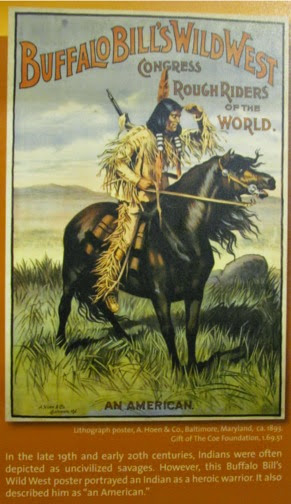
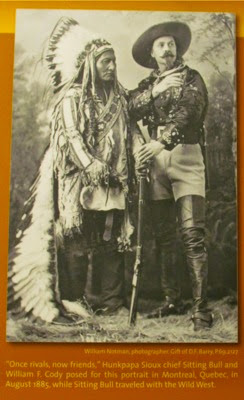
Oh, yeah, and he treated women as equals. He even paid them equally with the men for equal work. Obviously ahead of his time. Of course, some of his women stars were better with a gun than his male stars. Annie Oakley is an example of this.
‘What we want to do is give women even more liberty than they have. Let them do any kind of work they see fit, and if they do it as well as men, give them the same pay.’
William F. Cody
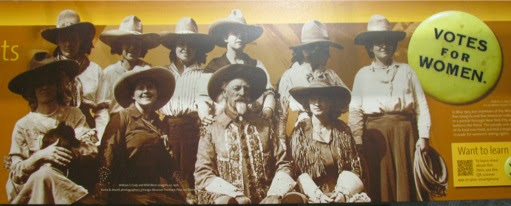
He was instrumental in the founding of the city of Cody, WY and lobbied for the Burlington Northern RR to come to Cody. With the coming of the railroad, he saw tourists flocking to Cody and then into Yellowstone. He then built a hotel in Cody, named the Irma, after one of his daughters and lobbied also for automobile traffic in the National Parks, especially Yellowstone. He then built two other smaller hotels on the way from Cody into the park.
Here is a picture of campers and other visitors to Yellowstone waiting in line at the park’s east entrance gate 8/15/1916. Now, there were rules for these cars: you couldn’t exceed 12 mph when climbing and 10 mph when descending steep grades, if you were driving one of Yellowstone’s few ‘good roads with straight stretches’ you cold speed along at 20 mph as long as ‘no horse team was nearer than 200 yds.’ Of course, motorists could interpret ‘good’ and ‘straight stretches’ as they wished. Cody himself planned to drive the first car into Yellowstone but he was performing at the time and couldn’t. In 1915, 958 cars carried 3513 people into Yellowstone. Today, some 1,000,000 cars carry 3,000,000 annually into Yellowstone.
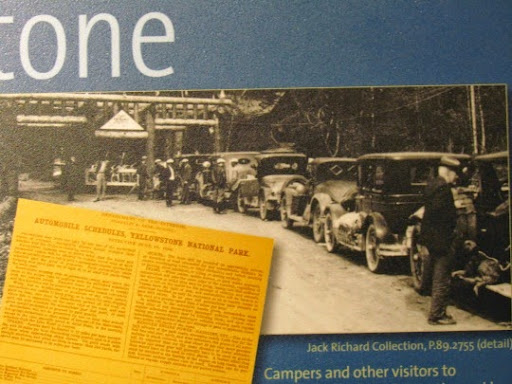
He toured the world, over the 30-yr history of his shows he probably traveled the distance of earth to the moon, 250,000 miles. He performed in Algona, Emmetsburg and Fort Dodge, the towns of my youth. He hired skilled horsemen from a variety of cultures: cossacks from Russia, Turks, Gauchos, Mongols, Arabs, Georgians, all of whom were given a chance to display their skills. Here’s a picture of his troupe with an emphasis on some of these groups. In the picture below you can see Native Americans, Cossacks, Arabs, American cavalry men, women and many others.
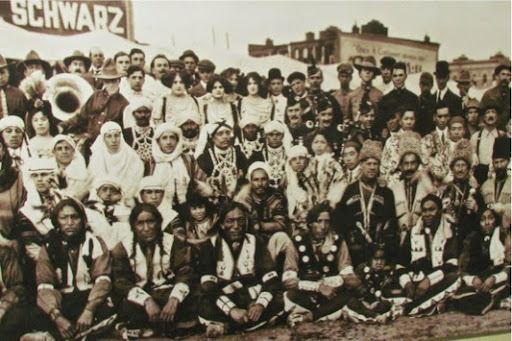
In November 1902, Cody opened the Irma Hotel, which he named after his daughter. He envisioned that a growing number of tourists coming to Cody via the recently opened Burlington rail line. He expected that they would proceed up the Cody Road along the North Fork of the Shoshone River to visit Yellowstone Park. To accommodate travelers, Cody completed construction of the Wapiti Inn and Pahaska Teepee.
Did he die famous? Yes. Did he die rich, as he always wanted to be? Nope. He died a pauper. He pursued riches all his life but he spent too much, invested too poorly and died poor.

However, whether fact or fiction, we can’t ignore his contributions to the West. And, just as people flocked to his Wild West Shows, they flock to Cody, WY to visit the museum named in his honor.
And, what a museum it is. One section is devoted to his life and story.
We also visited the Whitney Western Art Museum and saw some marvelous paintings. I even got to see an original Thomas Moran which I had heard about when we visited Yellowstone.
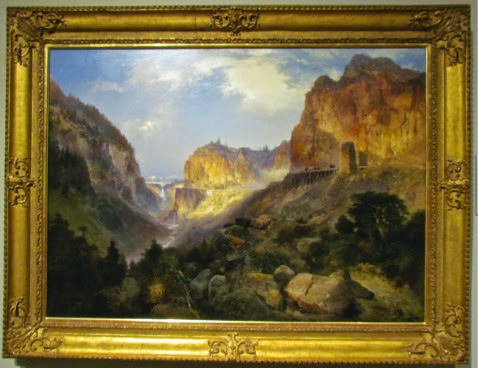
There was also many sculptures in the grounds of the museum.
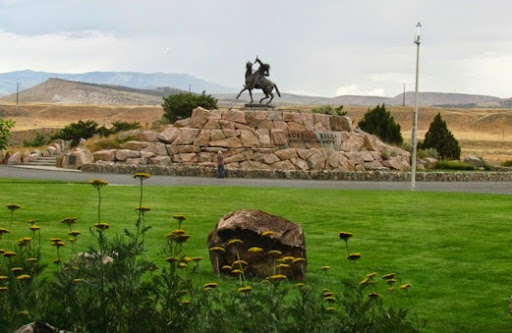
The Plains Indian Museum presented the lives of the Plains Indians, the tribes that stretched from the Mississippi River to the Rocky Mountains. There was lots about their life before the white man came with several teepees showing how they lived, this diorama comparing moving with their traditional dog and then with a horse. Since a horse was bigger and stronger, they could now have bigger homes with taller lodgepoles, they could move much faster, could carry much more and could move much further.
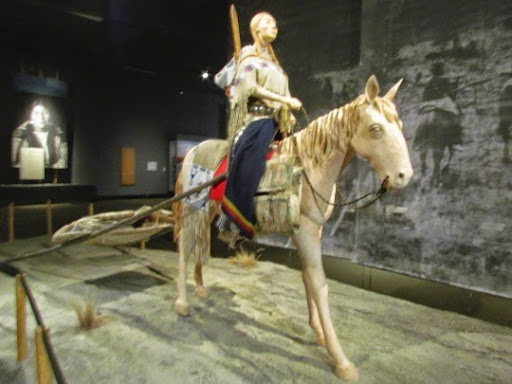
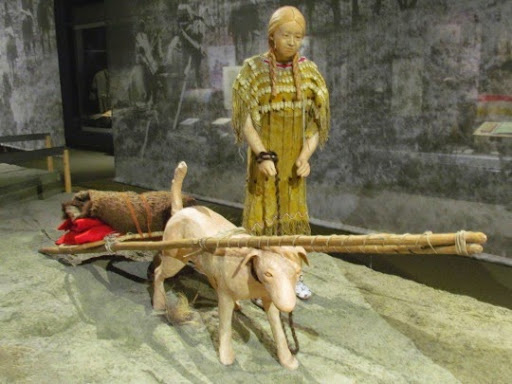
And, of course, they showed how the Native American was treated when the white man moved in. The attempt was to make the Indian like the white man: wear the same clothing, the same haircuts and live in the same homes and farm the same way. disastrous results.
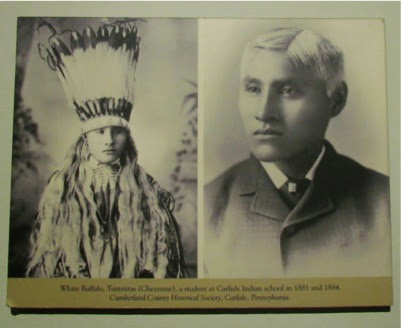
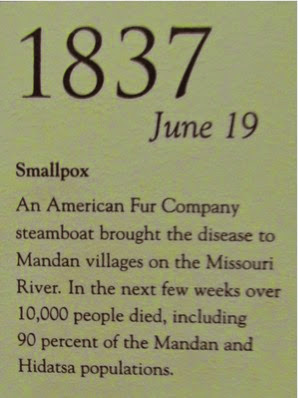
We sure did learn a lot a see a lot in the museums here. The art was wondrous but I couldn’t help but feel a bit sad about how the life of Buffalo Bill ended. He had such an impact on America socially, historically and politically and economically but died penniless and feeling a failure. And the treatment of the Native Americans is always a sad part of our history.

New book got published http://www.amazon.com/Georgian-Trick-Riders-American-1890s-1920s/dp/0786497394
ReplyDeleteNew book got published http://www.amazon.com/Georgian-Trick-Riders-American-1890s-1920s/dp/0786497394
ReplyDelete